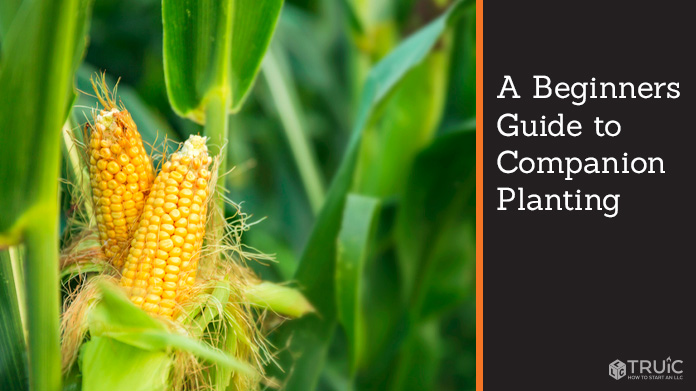A Beginners Guide to Companion Planting
For centuries, gardeners and farmers alike have utilized the benefits of companion planting to reduce problems and increase the yields in the garden. In this guide we explore the benefits of companion planting and how to implement it on your CSA farm.

What is companion planting, and how does it work?
It’s a simple idea: certain plants benefit each other when grown in proximity, while others prefer to be separated. Your farm is an ecosystem with many different aspects that all interact with each other. By understanding this principle, you can start to create a production system that is more self-sufficient and easier to maintain and a great place to start is by incorporating companion planting strategies.
Reduced Pest Pressure
There are millions of different insects in the world, and less than 1% of them are considered ‘“agricultural pest.” The rest are either benign or beneficial. One of the main reasons people use companion plants in the garden is to reduce pest pressure without having to use pesticides. Most insects are able to find the crops they love through their sense of smell, and some plants (especially herbs) are great at masking the scent. Some great scent-blocking plants include:
- Basil
- Dill
- Lavender
- Marigold
- Sage
- Parsley
- Catnip
- Rosemary
Other plants can reduce pest issues by attracting beneficial insects that prey on and compete with unwanted pests. Hoverflies, lady bugs, lacewings and parasitic wasps are great to have in the garden, and we can attract these types of bugs by providing the right habitat. Marigolds, dill, lavender and yarrow are some common plant species that attract beneficial insects. Marigolds are also known to deter nematodes that feed on the root systems of crops.
There are hundreds of different combinations of plants that can be used to attract specific beneficial insects, but some plants stand out from the rest, being attractive to huge varieties of beneficial critters and insects. Below is a list of the top ten plants to have on your farm for attracting beneficial insects:
- Marigolds
- Yarrow
- Cosmos
- Buckwheat
- Black-eyed susans
- Sunflower
- Angelica
- Dill
- Laceflower
- Meadowsweet
Companion Planting for Natural Supports
Another common way of companion planting is to use certain plants as natural supports for other sprawling and vining crops. Corn and sunflowers are the most common plants used to provide physical support to other crops like peas and cucumber.
An example of this can be found in the three sisters model. This method of companion planting dates back centuries to the Native Americans, wherein three types of crops are grown together: Corn, winter squash, and pole beans. In this combination, corn acts as a stake for the beans to grow upward and the squash foliage sprawls out, providing shade on the ground level.
Nitrogen Fixation
Certain plants are nitrogen fixing, meaning that they are able to fix atmospheric nitrogen into the ground, which improves soil health and provides nutrients for neighboring plants. This happens because of a symbiotic relationship between certain bacterium in the soil and the root nodules on these plants.
One of the main reasons that some farmers use cover crops is to increase fertility and soil health using this principle. Legumes such as beans and peas are the most common types used for nitrogen fixation, but there are also some species of trees that can fix huge amounts of nitrogen in their root zone while also providing shade for crops that need it.
Shade Regulation
While certain crops need full sun to thrive, others such as lettuce, spinach and basil like to have some shade. By strategically planting taller plants around these crops, you can help keep things cool during those hot summer days when plants tend to get dehydrated. Trees and shrubs can provide shade while also creating habitats for beneficial insects. There are also fast growing annuals like sunflowers that can quickly provide shade, and they can offer other benefits as well.
Weed Suppression
Sprawling edibles, such as squash, melons and sweet potatoes, provide significant ground coverage, which suppresses weeds and protects the bare ground from sun erosion. There are other inedible ground covers that are great for this purpose, too. Clover is an amazing ground cover that spreads quickly while simultaneously fixing nitrogen in the soil near its root system. However, be careful not to let it overgrow as clover can be invasive if not kept in check. Clover can also be grown on the pathways of your vegetable crops. These are called “living pathways,” and they are common in permaculture designs.
Incompatible Vegetables
Some crops simply don’t do well together. This is usually because they feed on the same concentrations of certain nutrients and therefore compete with each other in the same way that weeds compete with crops. Below is a list of some common vegetable crops with pairings to avoid.
| Crop: | Avoid pairing with: |
|---|---|
Corn |
Tomato |
Tomato |
Corn, eggplant, peppers, cabbage, dill |
Carrot |
Dill, potatoes, parsnips |
Garlic |
Peas, beans |
Potatoes |
Tomatoes, cucumber, squash, pumpkin |
Kale/collards |
Strawberries, tomatoes, peppers |
Broccoli, cauliflower, cabbage |
Squash, peppers, tomatoes |
Green beans |
Leeks, onions, chives |
Radish/turnips |
Potatoes |
Asparagus |
Mint, onion |
Pole beans |
Beets |